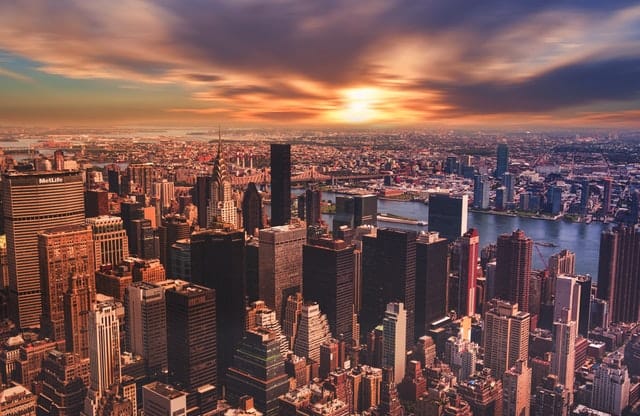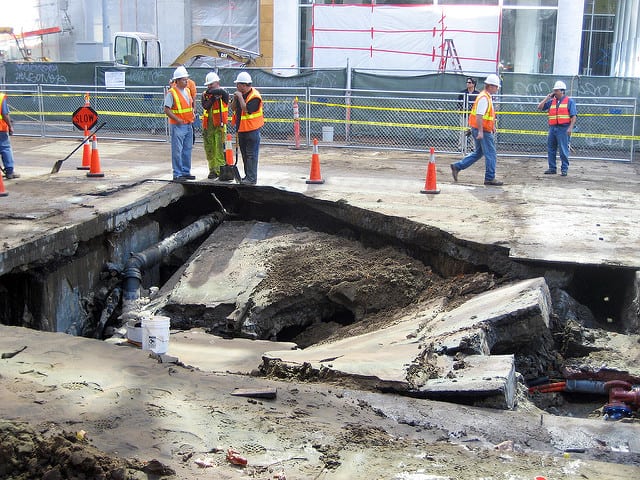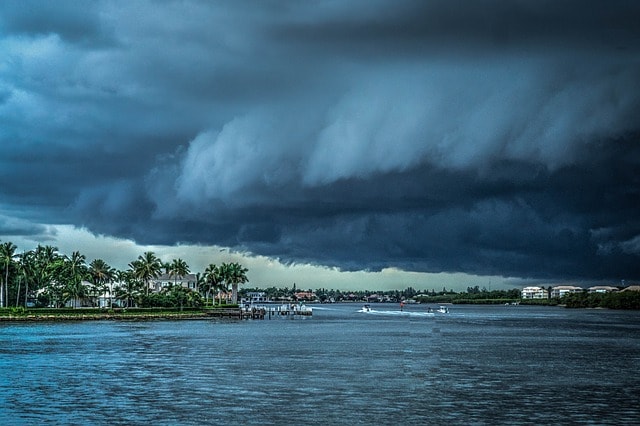List of 11 Major Global Problems of Urbanization

Urbanization is a process by which more and more people move from rural area or countryside to an urban area such as cities, towns, and that leads to expansion and growth of cities and towns. People move to cities because they believe in achieving better economic, political, and social mileages there than the rural counterpart.
Urbanization has occurred in the past also, but currently, it is happening on a global scale as resources and facilities tend to concentrate more in cities and towns. At present half of the worldwide population is living in cities, and by 2050, this number will increase to two-thirds of the world’s population.
Urbanization process started during the industrial revolution, and it is directly associated with industrialization that pulls the workforce from rural areas to cities to get jobs in factories, while agricultural jobs become less important. The land is used for sustainable development of infrastructure facilities in the cities, unlike rural areas. The commercialization of goods and services, including trade, also play a significant role. In this new non-agriculture economy, cities play a vital role to enhance economic growth and prosperity.
It is a widespread phenomenon in developing and developed countries as there is a clear difference in the level of development in cities and villages and maximum countries focus on the development of urban areas instead of rural areas. As a result, urban areas are equipped with better physical, institutional and social infrastructure, public facilities, transportation and communication, modern amenities, and most importantly economic/employment opportunities compared to the rural areas.
Majority of people migrate to cities and towns as they find rural regions full of hardship coupled with backward/primitive lifestyle, and therefore they want to enhance their lifestyles with hi-tech facilities. However, in due course, several urbanization issues crop up due to these activities.
11 Major Global Problems of Urbanization
The impacts of urbanization are mostly negative. The increasing population density, unplanned growth, and demands of urban environments create several problems as discussed below.
1. Degraded Environmental Quality
At present, the most serious issue due to urbanization is degraded environmental conditions containing poor air and water quality, including land, noise, and other pollution, causing damages to the health of city dwellers. The increased demand for infrastructural facilities such as building, factories, offices, hospitals, roads leads to cutting down trees and forests and destroying natural habitats.
Apart from that, emissions of harmful gases from motor vehicles, factories and the use of environmental unfriendly fossil-fuel sources release several toxic gases such as carbon dioxide (CO2), carbon monoxide (CO), nitrous oxides (Nox), sulfur dioxide (SO2), benzene, ozone and also fine particles released by diesel motors cause air pollution and pose a severe threat to human health.
The disposal of domestic and industrial waste into the river or lake pollutes the water. As the cities remain busy with human activities 24X7, noise pollution also seems obvious.
2. Overcrowding
Overcrowding occurs when too many people accommodate into a little space. It is a consistent problem of urbanization as a large number of people keep on moving from undeveloped areas to live in cities. The size of the cities gets squeezed into a very little space to fit the population over its capacity. As a result, the cities become congested, and it creates tremendous pressure on infrastructural facilities like housing, water, transport, electricity, and of course, employment.
3. Housing Problems
The housing problems arise due to the increase in the population of cities. The overcrowding leads to scarcity of houses. The problem becomes serious with the invasion of unemployed, impoverished immigrants in large number from nearby areas in their search for a living place. With the lack of adequate building material and financial resources, and as space cannot be sufficiently expanded to cater to housing and public utilities for all, it becomes an acute problem.
4. Unemployment
More than half of unemployed youths live in metropolitan cities around the globe, and the percentage is even higher among educated people. Although the income is high in urban areas compared to rural incomes, the high cost of living makes it trivial. Moreover, the relocation in huge number from rural to urban areas makes the matter even more serious.
5. Development of Slums
The fast urbanization, in combination with industrialization, pulls a large number of people to urban areas where the high cost of living and unemployment, leads to the growth and spread of slums and unlawful resident settlements. The lack of developed land for housing compared to the large influx of rural job seekers to the cities and towns, and the high cost of land and living place beyond the reach of urban poor are the main reasons for the explosion of slums in urban areas.
6. Water Problems
Water is an essential element of life. Because of overpopulation water becomes scarce in the urban areas and the supply of water falls short of demand as cities grow in population size. Moreover, it becomes a serious concern when health problems arise from water pollution and contaminated water.
7. Sanitation Problems
Sanitation problem is the most common problem in any urban areas, and it stems from overpopulation. Inadequate sewage facilities along with incapability of municipalities and local governments in the proper management of sewage facilities due to serious resource crisis make the situation pitiful. Moreover, due to the lack of infrastructure of treatment of sewage waste, these get drained into nearby water bodies, causing pollution and spreading communicable diseases such as diarrhea, dysentery, plague, typhoid, and even deaths.
8. Health Hazards
The congested living in urban areas spread diseases like anything. The overall environmental pollution in addition to infrastructural problems, poor sanitation, water problem, and insufficient public health care services spread infectious diseases mostly in slums and other health problems such as asthma, allergies and other respiratory diseases, cardiovascular problems, infertility, food poisoning, even cancer, and premature deaths.
9. Transportation Problems
More people and more activities surely mean more traffic congestion. Almost every city and town is suffering from a severe form of transport problem and traffic blockage. The reasons are an inefficient transportation system and unreliable public transport system that is increasing the number of vehicles on the road every year and thus creating a traffic jam. It also causes traffic fatalities in large number.
10. Disposal of Trash
There is no denying the fact that urbanization-pushed trash disposal problem is now at an alarming stage. Every day a huge amount of garbage produced by the people in cities cause serious health problems. The existing landfills are full, and most cites lack proper arrangements for garbage disposal. Poisonous gases release from these landfills and mix in the environment resulting in various health problems.
Wastes putrefying in the open also give birth to diseases that spread through insects and animals like flies and rats and contaminate groundwater. People living near the decomposing trash and raw sewage become the victim of foul smell and suffer from diseases such as respiratory problems, dysentery, diarrhea, malaria, typhoid, jaundice, and plague.
11. Urban Crime
The multifaceted issues of urbanization like overcrowding, unemployment, poverty, lack of resources, and lack of social services give rise to a number of social problems, including violence, drug abuse, and crime. The poverty-related crimes such as theft, cheating, breach of trust and other violent urban crimes such as rape, murder, kidnapping, and robbery, disturb peace and tranquillity of the cities making them highly unsafe for living, especially for the women.
References:
https://www.nationalgeographic.com/environment/habitats/urban-threats/
https://www.britannica.com/topic/urbanization






